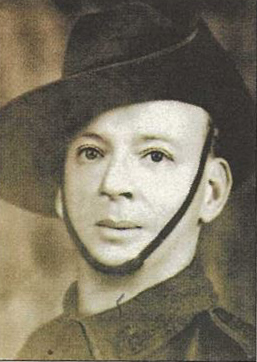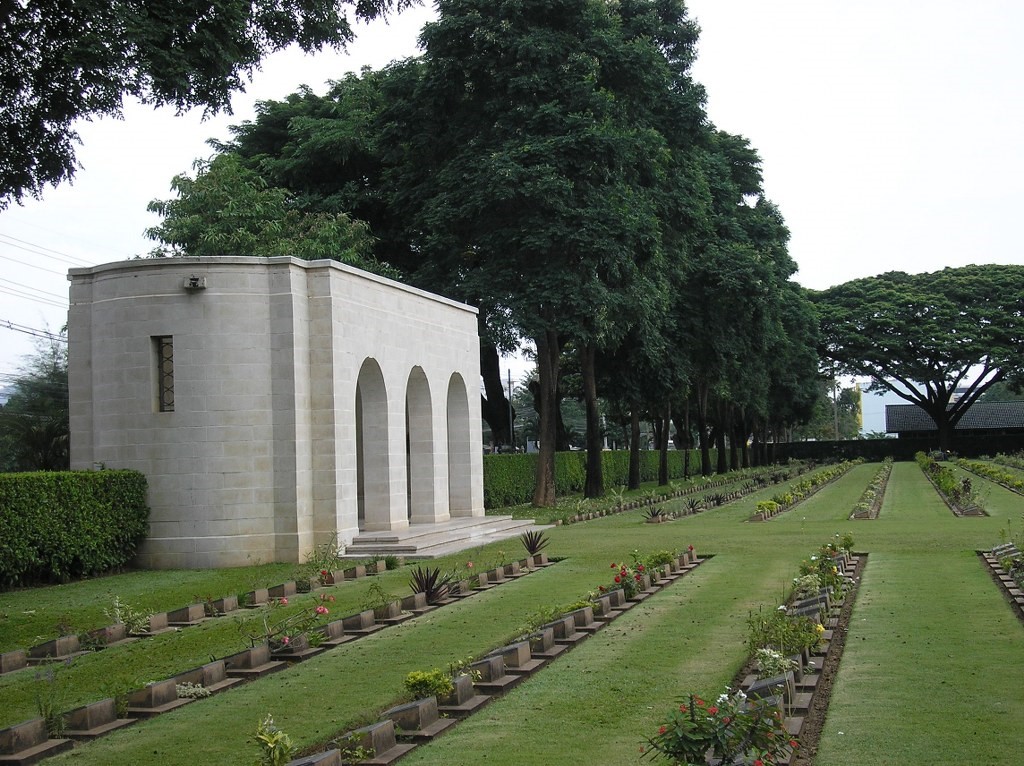Private Edward Henry King, the son of William Henry King and Anna Christine King (nee Vohland), was born at Oakey in Queensland on 2nd August 1905. Toowoomba Grammar School Archive Records state, ‘He was a Trustee at the Toowoomba Grammar School’. He voluntarily enlisted in the Australian Imperial Force at Toowoomba on 23rd April 1941 after giving a commitment that he would serve for the duration of the war and an additional twelve months. He was allotted the regimental number of QX16949. At the time of enlistment, he was single and employed as a Farmer and residing at “Iredale”, Helidon. His physical description at the time of enlistment was that he had fair hair and blue eyes. He stated that he was of the Church of England religion. He gave his next of kin as his mother, Mrs Annie Christina King, residing at Nambour.
Private Edward King joined the Northern Command Reception Camp at the Exhibition Grounds in Brisbane on 23rd April 1941. He joined the 11th Training Battalion at Redbank Camp on 26th April 1941. He was granted pre-embarkation leave to farewell his family and finalize his personal affairs during the period 5th May until 12th May 1941. He was admitted sick to the Camp Dressing Station at Grovely Camp during the period 14th May until 17th May 1941. Joined 2nd/26th Battalion at Bathurst on 23rd July 1941.
The 2nd/26th Infantry Battalion was raised in Queensland in November 1940 at Grovely Camp in Brisbane. The Battalion transferred to the Redbank Camp on 29th January 1941. The Battalion left Redbank Camp shortly after midnight on 24th February 1941 and moved by rail to Bathurst in New South Wales where it joined battalions from the other states as part of the 27th Australian Infantry Brigade. Military training continued whilst the battalion was located at Bathurst. By mid-July the 27th Infantry Brigade units prepared for imminent embarkation. The 2nd/26th Infantry Battalion left Bathurst on 29th July 1941 and proceeded by rail to Port Melbourne where it boarded the Dutch registered transport ship “Marnix-Van-St Aldegond” on the following day. Private Edward King embarked with his battalion from the Port of Melbourne on 30th July 1941 and after clearing Port Phillip it joined a convoy of ships escorted by a cruiser of the Royal Australian Navy. It stopped at Fremantle in Western Australia and after departing that port sailed to Singapore where it docked on 15th August 1941.
Private Edward King disembarked with his battalion at Singapore and the battalion moved to Wavell Camp near Changi. The 2nd/26th Battalion moved to Johore in Malaya in September 1941 and was given responsibility for the defence of a nominated area should any invasion of Malaya be attempted. Active patrolling was conducted and the troops became acclimatised and trained in rubber plantations, open country and in the jungle environment. In early December 1941 the battalions moved to their battle stations. In mid-January 1942 the 2nd/26th Infantry Battalion was in action against the Japanese during the Allied Forces step by step withdrawal down the Malayan peninsula. The battalion was involved in action at Yong Peng, Ayer Hitam, Sempang Rengram, Namazi Estate. The battalion crossed the Causeway between Johore and Singapore Island on 1st February 1942 and took up defensive positions in the Kranji area on the western side of the Causeway. The 2nd/26th Infantry Battalion was involved in the fierce fighting on Singapore Island until the Allied Forces surrendered on 15th February 1942.
Private Edward King was in the mortor platoon.
Private Edward King became a prisoner of war of the Japanese when the Allied Forces surrendered at Singapore. He was sent by the Japanese as a member of “F” Force to work on the Burma Thailand Railway. He died of illness at Kanburi ‘F&H’ No 2 Hospital Camp of dysentry in Thailand on 15th January 1944. At the time of his death Edward King was 38 years of age. After the war his remains were exhumed from Kanburi No 4 Buriel Ground 063 and he was re-buried in the Kanchanaburi War Cemetery.
Edward King’s name is commemorated on Panel No. 53 at the Australian War Memorial in Canberra and locally on the Toowoomba Mothers’ Memorial, The Toowoomba Soldiers’ Memorial Hall Honour Board and the Toowoomba Grammar School WW2 Honour Board.
Note
A comprehensive history of the 2nd/26th Battalion during World War 2 can be found in Lieutenant Colonel Ron Magarry’s book, “The Battalion Story”, 1994. ISBN 0 646 820 582. An appreciation of his treatment whilst a prisoner of war of the Japanese that ultimately led to his death can be found in Don Wall’s book, “The Heroes of “F” Force”, D. Wall, Mona Vale, New South Wales.1985. ISBN 0 646 16047 8. His name appears in the Roll of Honour published in ‘The Battalion Story’.
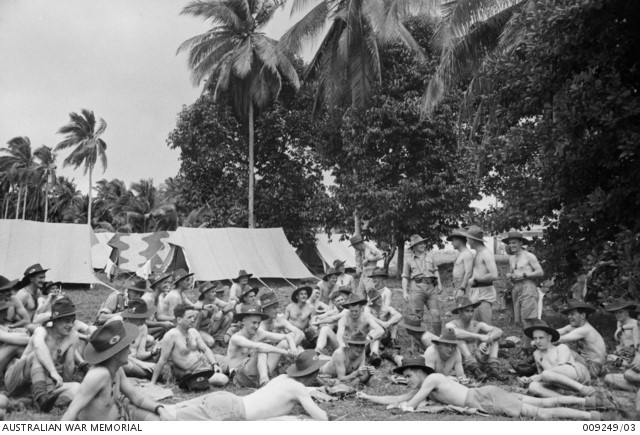
Australian War Memorial photograph 00949/03
After the Australian winter, Queenslanders of the 2nd/26th Infantry Battalion enjoy the tropical heat at Singapore, Malaya.
 Battle Flag for 2/26 Australian Infantry Battalion
Battle Flag for 2/26 Australian Infantry Battalion
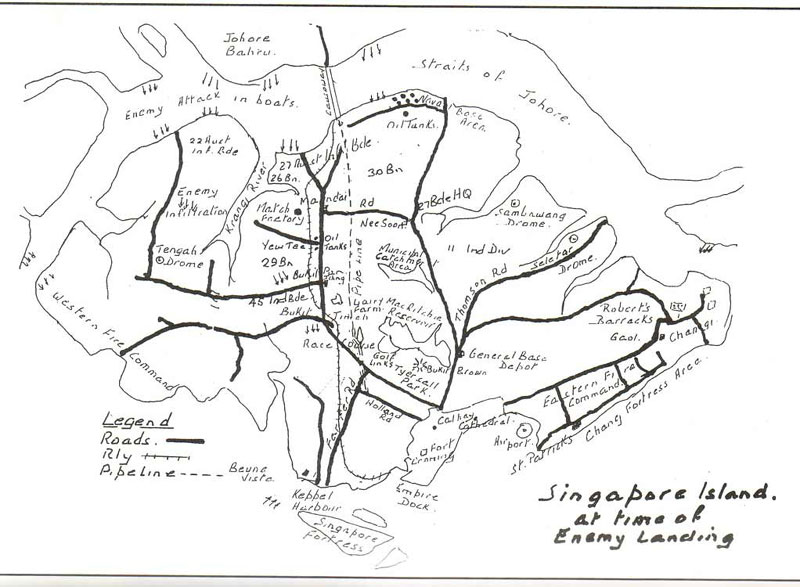
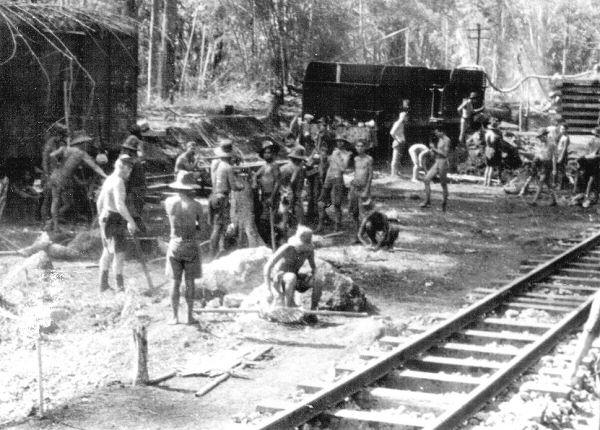
POWs working on the Thai-Burma Railway
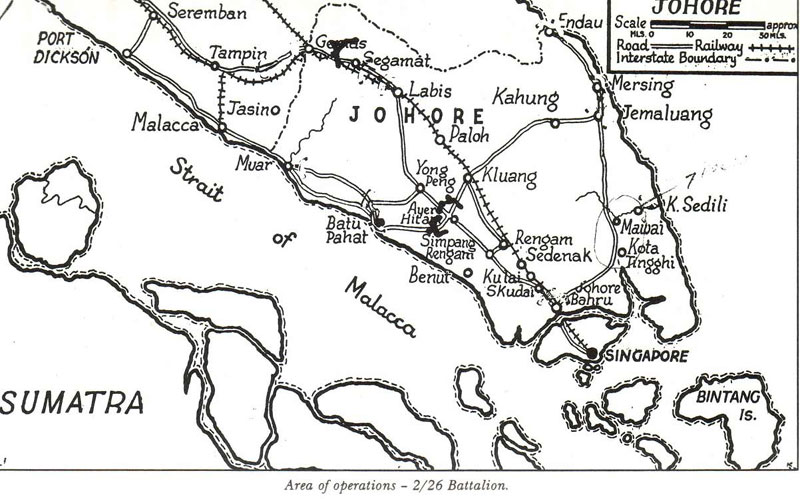
Operations in Malaya
External Links
Australian War Memorial Honour Roll
Thai Burma Railway Construction Museum Online: BRIEF HISTORY
Prisoners of War of the Japanese 1942-1945 (pows-of-japan.net)


